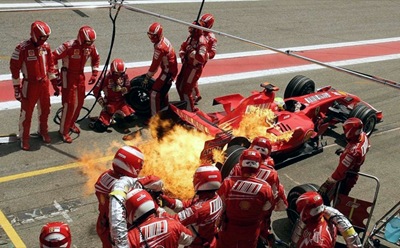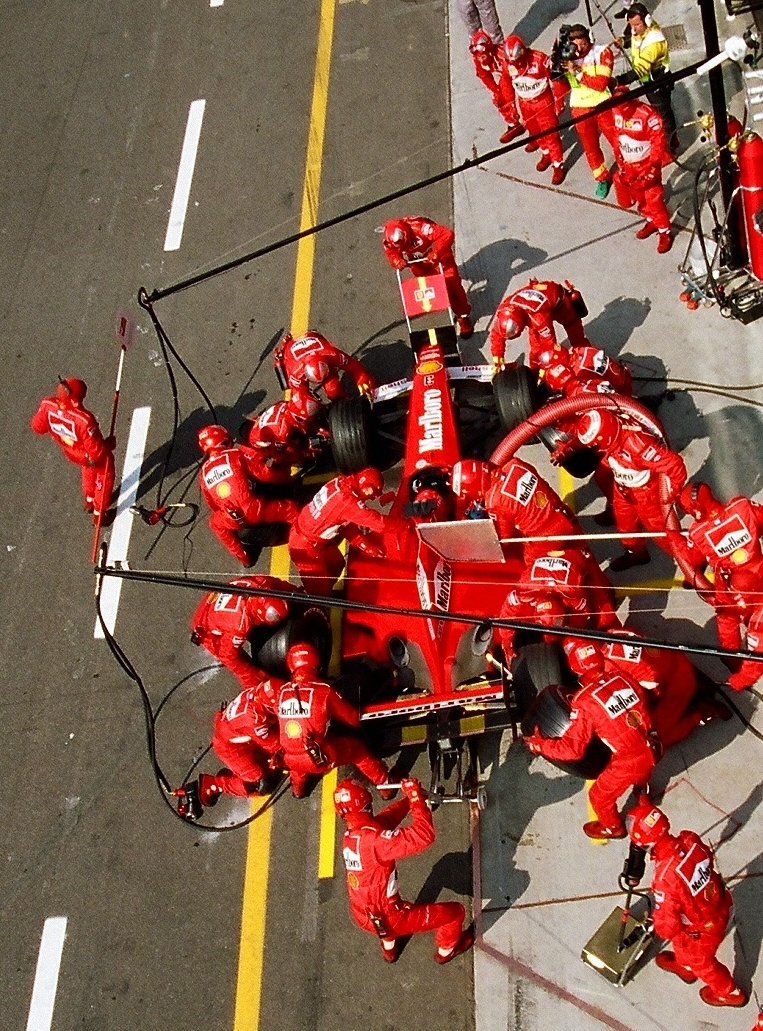
A highly charged competitive environment compressed into a narrow pit lane where cars share space with crew members and where raw fuel is in close proximity to red hot engines and exhausts makes for a potentially lethal combination.
But while no-one can deny that a Formula One pit lane is a fundamentally unsafe environment, strict safety rules play their part in keeping things under control. These include the following:
- Pit lane speed limit: The speed limit during pit stops is 60 km/h during practice and qualifying, 80 km/h during the race (60 km/h at Monaco). This limit was introduced in 1994 after a mechanic was injured in the Imola pit lane.
- Rules against going in reverse: Reversing in the pit lane is prohibited. If a car needs to be moved backwards, the crew must push it.
- Restriction on numbers of personnel in the pit lane: The crew of the competing cars are only allowed out of their garages and into the pit lane on the lap preceding their car’s pit stop. Other than officials, these are the only people allowed in the pit lane during the race. After the stop, they must return to their garages.
- Fire-resistant clothing: All pit crew members wear fire-resistant Nomex suits similar to those used by the drivers. These suits can withstand heat of up to 800 degree C for 12 seconds. In addition, the pit crew must wear full-face crash helmets for further protection from fire.
- Limited fuel pressurisation: Fuel delivery is limited to 12 litres per second, outlawing the high-pressure refuelling used in previous years. This rate of delivery produces a limited pressure that reduces the chances of spillage and fuel nozzle or rig failure compared to the old high pressure systems.
- Standardised safety valves for rigs, hoses, and fillers: In addition to the dead man’s handle on the fuel rig (this handle ensures that fuel flow stops the moment pressure is released on the handle) the inlet valves and fillers are standardised and designed in such a way as to prevent leakage of inflammable vapours. A two-way system equalises pressure as the fuel is delivered.
- Things can still go wrong though, as demonstrated by Ferrari in the 2003 Austrian Grand Prix when flames erupted from the filler of Michael Schumacher’s car during a routine stop. This was later traced to a faulty seal.


